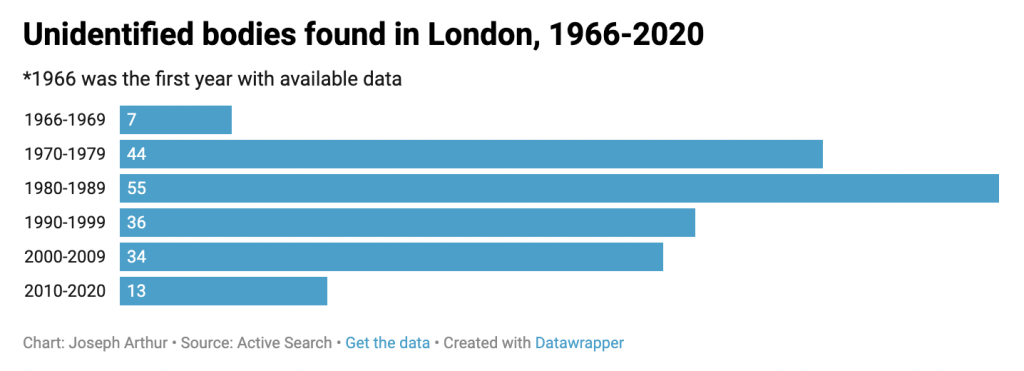Since 1970, the amount of people who go long-term missing in London has increased each decade and alarmingly, between 2010 and 2020, a record 46 people went long-term missing in the nation’s capital. But are these statistics reflective of a genuine crisis?
“Long-term missing” is defined as anyone who has been missing for 12 months or more. However, it’s not clear whether this classification has remained constant over time, and according to Francisco Garcia, journalist and author of If You Were There: Missing People and the Marks They Leave Behind, therein lies the main problem. Is there a genuine crisis in London, or do the rising numbers reflect a change in what we are counting?

“Police recording practices have changed several times over the decades and even as I was writing the book, were still evolving fairly regularly,” Garcia said.
Garcia said the fluidity with which police recording practices have evolved makes it challenging to understand whether the increased numbers are reflective of improved recording practices or a spike in missing people.
“There is a pretty wide range of views surrounding the most recent release of long-term missing data and clearly these questions about what precisely constitutes harm and vulnerability don’t necessarily have simple answers.” Garcia said the inconsistency in standards and practices for missing persons investigations has plagued the UK for a long time and is a key factor as to why interpreting the latest data is difficult.
However, he doesn’t believe that these problems can entirely explain the apparent rise in numbers: “Something has gone wrong beyond statistics when Croydon produces more missing persons reports each year than the whole of Germany.”
With the true meaning behind London’s missing persons data ambiguous, Garcia said technological advances in identification of unidentified bodies better reflects progress in this area.

He said, “There have been major technological advances in the last few decades that have helped with identifying bodies, clearly that doesn’t mean the issue of unidentified bodies has been ‘solved’ – a quick search will bring up dozens of desperately sad stories – but the decrease in numbers we’ve seen in the past decade is indicative of progress on that front.”
Garcia said putting names to unidentified bodies is important because it may help identify a missing person and put a case to rest. This would help us gain a clearer idea of what the latest missing data means and whether we are amidst a crisis because “the number of people reported missing has ballooned”, but we don’t know what to make of it just yet as most of those people return.
The increased number of reported missing people who then return is potentially a reflection of an improved response from the police when someone is reported missing and the higher numbers of long-term missing may simply be a product of the influx of reports.
However, this is just speculation and hearsay. Unfortunately, poor reporting of missing people in the past has left an abundance of potentially inaccurate data. As seen in figure 1, only one person was reported long-term missing in London from 1970-79, this figure is almost certainly inaccurate. This makes the validity of today’s missing persons data unclear.
Ultimately, is there a missing persons crisis in London? We can’t know for certain. The only certainty is that continued investment in missing persons investigations, and increased scrutiny of the police’s standards and practices for reporting and following up on missing persons cases will help to make an opaque picture clearer – and may lead to more missing people being found.